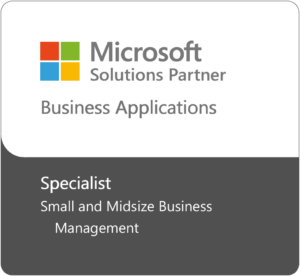September 2025 release delivers improvements
Microsoft’s latest F&SCM update brings AI-powered automation, enhanced visibility, and streamlined workflows that will transform how your finance team operates.
Your CFO walks into the leadership meeting with confidence instead of the usual stack of reconciliation reports and exception lists. When the CEO asks about cash flow projections or audit readiness, the answers come easily with real-time data and complete visibility rather than educated guesses and caveats.
Yes, it’s possible with Microsoft’s September 2025 release for Dynamics 365 Finance (version 10.0.45). This update delivers features that transform routine finance headaches into automated, intelligent workflows. Here’s what you need to know about the latest improvements to Microsoft’s enterprise ERP:
Enhanced visibility with accounts receivable structured logging
One of the standout features in this release is the new Accounts Receivable Structured Logging Framework. It’s not just another tracking tool, it’s like having a forensic accountant monitoring every customer invoice, every detail from creation to payment.
The framework tracks the complete lifecycle of customer invoice documents, including sales orders and pretext invoices, with detailed posting history and comprehensive error messages all accessible through the Customer Invoice workspace. When auditors ask about a specific transaction or when a customer disputes a charge, you’ll have a complete digital paper trail at your fingertips.
Currently in preview (requiring manual enablement), this feature eliminates the treasure hunts that finance teams know all too well. Instead of spending hours reconstructing what happened with a particular invoice, you get instant visibility into every step of the process. Give it a try — your finance team will thank you.
Fixed assets management gets a major upgrade
The September release brings significant enhancements to fixed assets management that address real-world challenges many organizations face. Three key improvements stand out:
- Asset splitting and transfer capabilities (in preview) now allow you to split and transfer fixed assets between legal entities. This is huge for companies with complex organizational structures or those undergoing acquisitions and divestitures.
- Unified posting dates for catch-up depreciation (in preview) streamline the depreciation process when assets require retroactive adjustments. This eliminates the complex workarounds that previously made these time-consuming and error prone.
- Centralized proposal management introduces a single page for creating both acquisition and depreciation proposals, reducing the number of screens and clicks required for routine asset management tasks.
Smarter accounts payable automation
The enhanced Accounts Payable Invoice Automation now includes an option to override actual tax amounts with imported tax amounts. While this might sound like a minor feature, it addresses a significant pain point for organizations dealing with complex tax calculations from external systems.
The default setting keeps this feature disabled, ensuring existing workflows aren’t disrupted while providing the flexibility to leverage imported tax calculations when needed. This is particularly valuable for companies operating across multiple tax jurisdictions or those using specialized tax calculation software.
Improved cash and bank management controls
Banking reconciliation just got more intelligent with enhanced Cash and Bank Management capabilities. The updated system prevents unintended matches between bank statements and bank transactions unless you explicitly define and configure reconciliation rules.
This enhancement reduces the risk of incorrect reconciliations while maintaining the flexibility to define matching criteria that work for your specific banking relationships and transaction patterns. It’s automation with guardrails—the system becomes smarter while giving you control over the matching logic.

Why these updates matter for your business
These improvements aren’t just feature additions—they represent Microsoft’s continued focus on solving real-world finance challenges through intelligent automation and enhanced visibility.
The structured logging framework, for example, transforms compliance from a reactive burden into a proactive capability. When your external auditors arrive, you will be prepared with comprehensive documentation rather than scrambling to reconstruct transaction histories.
The fixed assets enhancements address organizational complexity that many mid-market and enterprise companies face. As businesses grow, merge, or restructure, asset management becomes increasingly complex. These tools provide the flexibility to manage assets across multiple entities without losing control or visibility.
At Boyer & Associates, we’ve seen how properly implemented Microsoft Dynamics 365 Finance transforms finance operations across businesses of all types. These new features offer immediate value, but maximizing their impact requires strategic implementation and change management.
Our experience shows that organizations get the most value from new features when they approach them systematically. Rather than enabling everything at once, successful companies prioritize features based on their specific pain points and business objectives.
As Leif Stoa, the VP of Finance at Boyer client Farnam Street Financial, said, “Boyer and Associates did a fantastic job. I can’t say enough good things about Boyer. They’ve been wonderful to work with on both projects, both migrations.” This kind of partnership approach ensures you’re not just implementing features—you’re optimizing business processes.
Implementation timeline and considerations
The September 2025 release became generally available for self-updates in September 2025, with auto-updates rolling out in October 2025. Several features remain in preview, requiring manual enablement and careful testing before production deployment. However, the release delivers meaningful improvements that can immediately impact your finance operations’ efficiency and compliance capabilities. Whether you’re already using Dynamics 365 Finance or evaluating your options, these enhancements demonstrate Microsoft’s commitment to continuous innovation in the finance space.
Ready to explore how these new features could benefit your organization? Boyer & Associates brings deep expertise in Microsoft Dynamics 365 Finance implementations and optimizations. Our team can help you evaluate which features align with your business priorities and develop an implementation roadmap that delivers measurable results.
Want to see these new features in action? Contact Boyer & Associates today to schedule a demonstration and discover how the September 2025 release can transform your finance operations.










